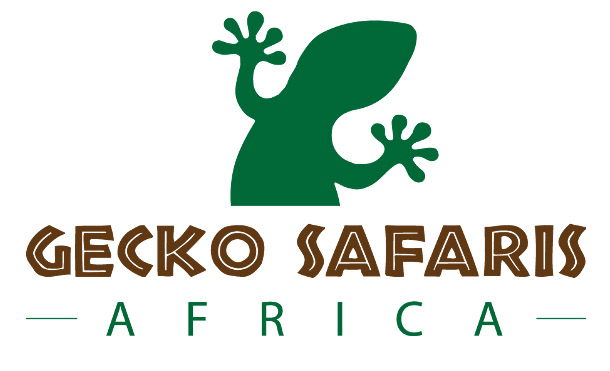What Makes East African Primates Unique Compared to Other Mammals?
East Africa are home to some of the world’s most remarkable primates, including chimpanzees, gorillas, bonobos and baboons.
These primates possess extraordinary traits that set them apart from other mammals not only in their physical attributes but also in their cognitive abilities and social behavior.
Found across countries like Uganda, Rwanda, Tanzania, Kenya and the Democratic Republic of Congo (DRC).
These primates thrive in diverse habitats, from the dense tropical rainforests to the open savannahs.
-
Opposable Thumbs for Precision
One of the most defining traits of primates, including those in East Africa, is the presence of opposable thumbs.
This allows them to grip and manipulate objects with incredible precision, a trait not found in many other mammals. Examples include:
- Chimpanzees (Uganda, Tanzania, DRC): Found in Kibale National Park in Uganda, Gombe Stream National Park in Tanzania and Virunga National Park in the DRC, chimpanzees use their thumbs to grasp tools, such as sticks to extract termites or stones to crack open nuts.
- Baboons (Kenya, Tanzania): Baboons, which roam the savannahs of Kenya and Tanzania, use their dexterous hands to forage for food, peel fruits and groom each other.
-
Large Brain Size Relative to Body
East African primates stand out due to their relatively large brains compared to their body size.
This contributes to their advanced problem-solving abilities and complex social behaviors:
- Gorillas (Uganda, Rwanda, DRC): Mountain gorillas, found in Uganda’s Bwindi Impenetrable Forest, Rwanda’s Volcanoes National Park and the eastern lowland gorillas (Grauer’s gorillas) in the DRC’s Kahuzi-Biega National Park,
They have large brains that enable them to develop family bonds, show empathy, and even mourn their dead.
- Chimpanzees: With a brain size closest to humans, chimpanzees display intelligence, using tools and solving problems, as seen in Uganda’s Kibale Forest and DRC’s Virunga National Park.
-
Complex Social Structures
Primates in both East Africa live in highly structured social groups, where hierarchy, bonding, and cooperation are critical for survival:
- Chimpanzees: Chimpanzee communities in Tanzania’s Mahale Mountains and DRC’s Virunga National Park are led by dominant males, but social bonds, grooming rituals, and alliances maintain group harmony.
- Baboons: Known for their strict social hierarchies, baboon troops in Kenya’s Amboseli National Park function through alliances and relationships.
They use grooming and cooperation to strengthen group cohesion.
- Bonobos (DRC): Unique to the DRC, bonobos have a matriarchal society, unlike the male-dominated chimpanzee groups.
They are peaceful and cooperative, often using social bonding to resolve conflicts.
-
Communication and Emotional Expression
East African primates possess a range of vocalizations and facial expressions allowing them to communicate complex emotions and intentions:
- Gorillas: Gorillas, particularly in Rwanda and DRC, use body language and vocalizations, like hoots and chest beats, to communicate with their groups.
They can express affection, aggression, and other emotions.
- Baboons: Highly vocal, baboons use distinct sounds to alert others to danger or signal group movements.
Their facial expressions convey emotions like fear, aggression, or submission.
- Bonobos: In the DRC, bonobos also use facial expressions and gestures to communicate, often showing affection through touch and close physical contact.
-
Adaptability to Various Environments
Primates in East Africa have evolved to thrive in diverse environments, from dense rainforests to open savannahs:
- Colobus Monkeys (Uganda, Tanzania, DRC): Black-and-white colobus monkeys found in Uganda’s Kibale Forest, Tanzania’s Jozani Forest and DRC’s Ituri Forest
They are expert climbers, using their slender bodies and long tails to navigate treetops.
- Baboons: Baboons, adaptable and versatile, live in a variety of ecosystems, from grasslands to semi-arid regions, such as Kenya’s Maasai Mara and Tanzania’s Tarangire National Park.
Their diet includes fruits, seeds and small animals making them able to thrive in different environments.
-
Unique Primates of Central Africa
The Democratic Republic of Congo (DRC) is home to unique primates not found in East Africa, adding to the richness of primate diversity:
- Eastern Lowland Gorillas (Grauer’s Gorillas): These gorillas, found only in the DRC, are the largest primate species and are known for their gentle nature and strong family bonds.
- Bonobos: Exclusive to the DRC, bonobos are close relatives of chimpanzees but differ in their peaceful matriarchal social structures.
They inhabit the rainforests south of the Congo River and are known for their cooperative behavior.

